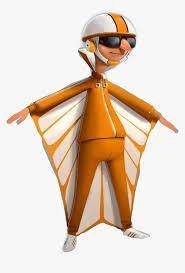
Physics, 11.11.2020 18:00 OliTepley5966
Can anybody pls explain this in other words? (caution: pretty long)
The sum of the two vectors is the vector that begins at the origin of the first vector and goes to the ending of the second vector. If we are using totally graphic means of adding these vectors, the magnitude of the sum can be determined by measuring the length of the sum vector and comparing it to the original standard. We then use a compass to measure the angle of the summation vector. If we are using calculation, we first determine the inverse tangent of 50 units divided by 90 units and get the angle of 29° north of east. The length of the sum vector can then be determined mathematically by the Pythagorean theorem, c.
This will give us two vectors that are perpendicular to each other and can be the legs of a right triangle. The east-west component of the first vector is = = 56. The north-south component of the first vector is = = 32. The east-west component of the second vector is = = 17.
The north-south component of the second vector is = = 30. We can now consider those two vectors to be the sides of a right triangle and find the length and direction of the hypotenuse using the Pythagorean Theorem and trig functions.
The direction of the sum vector is 74 N at 58° north of east. Perpendicular vectors have no components in the other direction. For example, if a boat is floating down a river due south, and you are paddling the boat due east, the eastward vector has no component in the north-south direction and therefore, has no effect on the north-south motion.
The boat is traveling across the river for 8.4 seconds and therefore, it is also traveling downstream for 8.4 seconds.

Answers: 3


Another question on Physics

Physics, 22.06.2019 04:30
Asystem containing an ideal gas at a constant pressure of 1.22×10^5 pa gains 2140 j of heat. during the process, the internal energy of the system increases by 2320 j. what is the change in volume of the gas?
Answers: 3

Physics, 22.06.2019 19:00
The friction of the water on a boat produces an acceleration of -10. m/s2. if the boat is traveling at 30. m/s and the motor is shut off, how long it take the boat to slow down to 5.0 m/s?
Answers: 3

Physics, 22.06.2019 23:40
Along wire of diameter 1 mm is submerged in an oil bath of temperature ∞ 31°c. the wire has an electrical resistance per unit length of 0.01 ω/m. if a current of 103 a flows through the wire and the convection coefficient is 500 w/m2·k, what is the steady-state temperature of the wire? from the time the current is applied, how long does it take for the wire to reach a temperature that is within 1°c of the steady-state value? the properties of the wire are 8000 kg/m3, 500 j/kg·k, and 20 w/m·k.
Answers: 3

Physics, 23.06.2019 07:00
Acircuit contain a 5-ohm,a3-ohm,and an 8-ohm resistor in series. what is the total resistance of the circuit
Answers: 2
You know the right answer?
Can anybody pls explain this in other words? (caution: pretty long)
The sum of the two vectors is t...
Questions

Social Studies, 22.07.2019 03:00

Spanish, 22.07.2019 03:00

Social Studies, 22.07.2019 03:00

History, 22.07.2019 03:00



Mathematics, 22.07.2019 03:00


Mathematics, 22.07.2019 03:00

Physics, 22.07.2019 03:00

English, 22.07.2019 03:00


Mathematics, 22.07.2019 03:00

Geography, 22.07.2019 03:00


Mathematics, 22.07.2019 03:00

History, 22.07.2019 03:00



Mathematics, 22.07.2019 03:00




